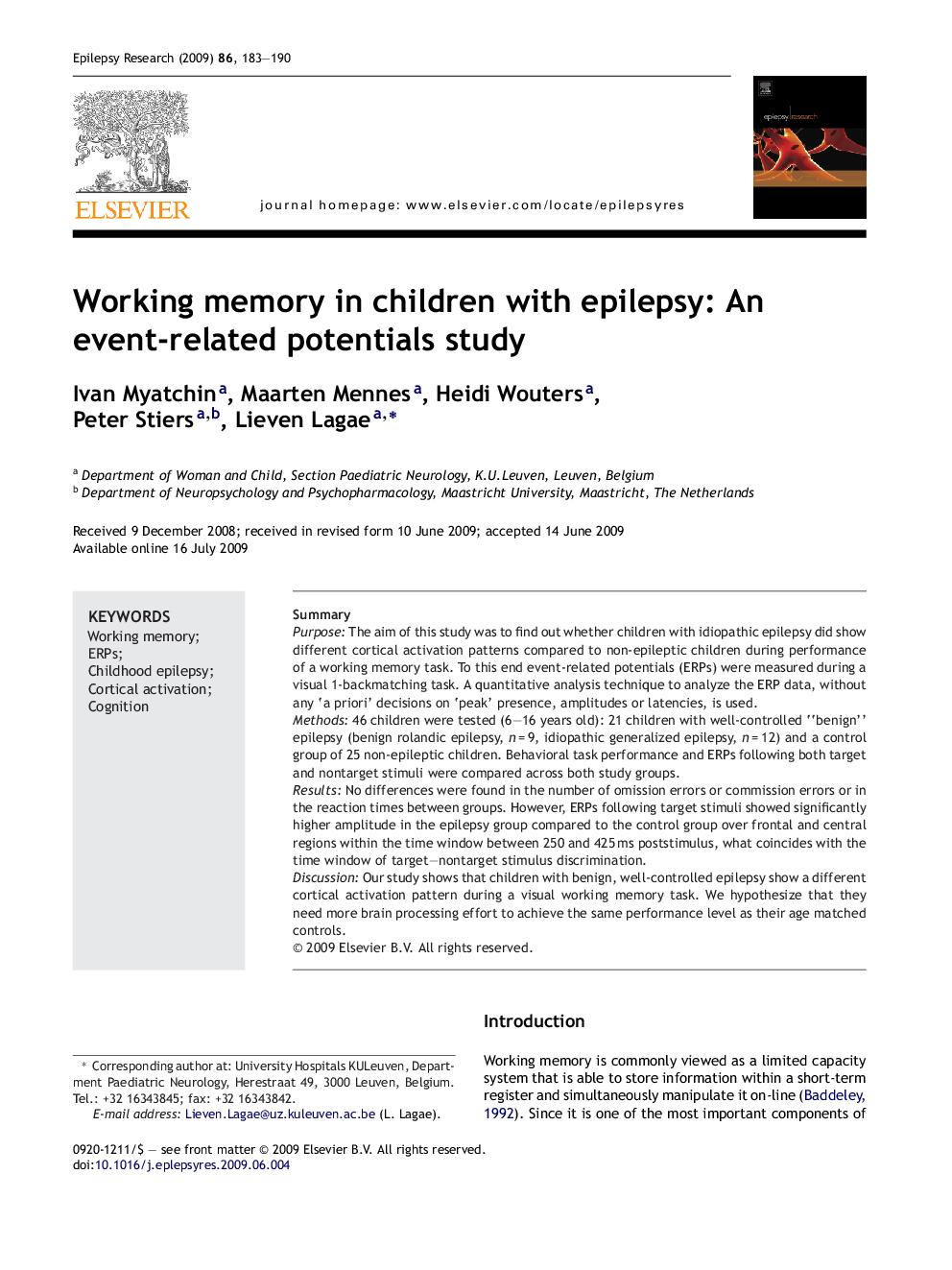| Article ID | Journal | Published Year | Pages | File Type |
|---|---|---|---|---|
| 3052760 | Epilepsy Research | 2009 | 8 Pages |
SummaryPurposeThe aim of this study was to find out whether children with idiopathic epilepsy did show different cortical activation patterns compared to non-epileptic children during performance of a working memory task. To this end event-related potentials (ERPs) were measured during a visual 1-backmatching task. A quantitative analysis technique to analyze the ERP data, without any ‘a priori’ decisions on ‘peak’ presence, amplitudes or latencies, is used.Methods46 children were tested (6–16 years old): 21 children with well-controlled “benign” epilepsy (benign rolandic epilepsy, n = 9, idiopathic generalized epilepsy, n = 12) and a control group of 25 non-epileptic children. Behavioral task performance and ERPs following both target and nontarget stimuli were compared across both study groups.ResultsNo differences were found in the number of omission errors or commission errors or in the reaction times between groups. However, ERPs following target stimuli showed significantly higher amplitude in the epilepsy group compared to the control group over frontal and central regions within the time window between 250 and 425 ms poststimulus, what coincides with the time window of target–nontarget stimulus discrimination.DiscussionOur study shows that children with benign, well-controlled epilepsy show a different cortical activation pattern during a visual working memory task. We hypothesize that they need more brain processing effort to achieve the same performance level as their age matched controls.
